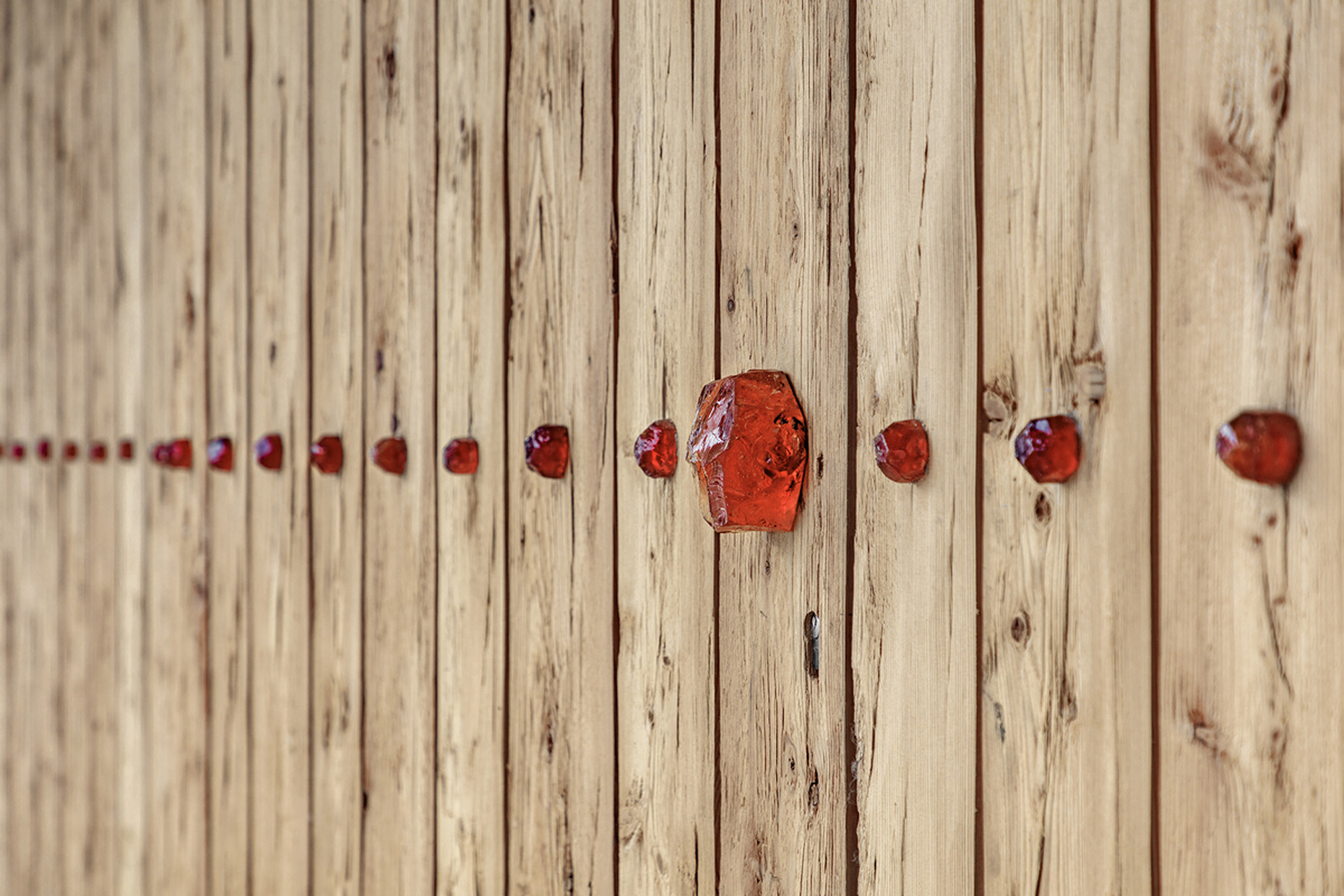Steep hut
At a height of 1,636 meters above sea level the Kreuzbergpass connects the Sexten valley in Trentino in the Dolomites with the Cadore valley in Veneto. The Romans were the first to build a fortified trading route here. To better structure the Alpine pass as a popular destination and starting point for hikes, the Sexten authorities commissioned Pedevilla Architects and Willeit Architektur, likewise in the Dolomites, to plan a service building. It marks the most easternmost gateway to the Dolomites UNESCO World Heritage site area. The service center provides hikers with information about nature, the network of hiking trails and the Alpine huts in the surroundings.
The building stands at a right angle to the street and has a pointed saddle roof making it more easily visible and acting as a point of orientation. Its shape resembles a mountain peak so that it harmonizes with the Alpine panorama. The low canopy identifies it as a service building while also emphasizing its job of providing shelter against rain and snow. It is accessed via two passages leading off to an exhibition room and information kiosk and toilets together with service rooms.
Local materials and high-quality details
With their choice of materials, Pedevilla Architekten and Willeit Architektur turn aesthetic expectations upside down: The steep gable roof made of fair-faced concrete cast from local Dolomite rocks appears both sturdy and solid. This is juxtaposed to side walls of hand-hewn larch that recalls local half-timbered houses. “The biggest challenge we faced was to realize a high-quality landmark on a low budget,” explains Armin Pedevilla. "The details had to be simple yet nonetheless value."
These details include elements of amber-colored solid glass that feature both on the concrete surfaces but also on the timber. They are reminiscent of the resin from the larch trees whose timber was also used for the interior fittings and provide an aesthetic link to the outer shell. They have to withstand extreme temperatures as the climate on the Kreuzbergpass is harsh with large amounts of snow up to 2 meters. In the summer temperatures often rise above 30 degrees, while they can drop to -20 degrees in winter. The difficult weather already made the construction a challenge: “The construction period was cold and rainy," remembers Armin Pedevilla. "Nor are the sudden changes in the weather to be underestimated as you have to respond very quickly to them.” In fact, the team only just managed to complete the work before the first snow fell. The result is all the more impressive – the architects has certainly created a landmark that stands out from other classic mountain huts using simple means, local materials and surprising proportions. Once again, they proved that the Alpine region is not worth visiting for its nature but also for lovers of good architecture.




















